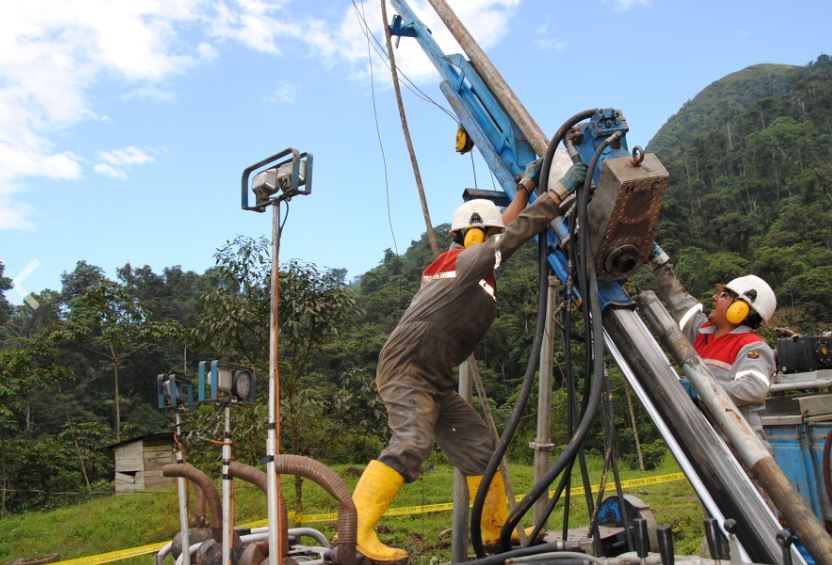Lumina Gold drills 0.82 g/t AuEq over 336 metres at Cangrejos, Ecuador

Lumina Gold Corp. [LUM-TSXV; LMGDF-OTCQX] reported results from 13 drill holes at its 100%-owned Cangrejos project located in El Oro province, southwest Ecuador. Seven of the reported drill holes are from Cangrejos, and six are from Gran Bestia. To date, 83 drill holes have been completed, totalling approximately 27,000 metres of drilling.
Lumina has increased the total drill program at Gran Bestia by an additional 4,000 metres to 6,750 metres. The drill program has been designed to define the northwestern step-out area to at least an indicated category of mineral resource so that it can be incorporated into a prefeasibility study mine plan. In addition to adding indicated mineral resources to the pit, the program has the potential to enhance the already-excellent strip ratio at Gran Bestia.
The original planned infill and step-out drill program will be completed in mid-June, 2022, and the additional drilling will take approximately 1.5 months to complete.
Cangrejos drill hole results: Hole C22-185 was drilled on the eastern margin of the deposit and intercepted 83 metres from 178 metres down the hole grading 1.19 g/t gold and 0.14% copper (1.39 g/t gold equivalent – AuEq) in hydrothermal breccias cutting strongly potassic and tourmaline-altered quartz diorite mineralized with chalcopyrite and pyrite. Including intervals above and below this, a total of 318 metres exceeding the cut-off grade were drilled in the uppermost 410 metres from surface in hole C22-185. This hole extends the eastern margin of the Cangrejos deposit.
Holes C22-186, C22-194 and C22-195 were drilled in the southwestern quadrant of Cangrejos, and all holes contain multiple intercepts reported in an attached table, including 30 metres from 54 metres down the hole grading 0.83 g/t gold and 0.08% copper (0.97 g/t AuEq) in hole C22-195 and 36 metres from 244 metres down the hole grading 0.75 g/t gold and 0.08% copper (0.88 g/t AuEq) in hole C22-186. Holes C22-184, C22-189 and C22-190 were drilled along the northern margin of the Cangrejos deposit, and grades were typical of those encountered in this area, except for the previously reported vein encountered by hole C22-178 (10 metres from 148 metres down the hole grading 19.33 g/t gold and 0.12% copper (19.51 g/t AuEq)).
At Gran Bestia, hole C22-187 intersected 336 metres grading 0.82 g/t gold, including 12 metres grading 1.46 g/t gold and 0.12% copper (1.68 g/t AuEq) from surface; 60 metres grading 0.96 g/t gold and 0.1% copper (1.12 g/t AuEq) from 82 metres down the hole; and 28 metres grading 1.01 g/t gold and 0.07% copper (1.12 g/t AuEq) from 200 metres.
These intervals extend the higher-grade breccia zone by approximately 50 metres to the northeast from those reported for hole C22-181. This higher-grade breccia is further defined to the southwest by holes C22-170, C22-167 and C22-157. Hole C22-192, which was collared on top of the Gran Bestia ridge and angled east-northeast toward the higher-grade breccia, contained six intervals, but did not extend deep enough to intersect the breccia.
At Gran Bestia, the corridor where the higher-grade breccias occur over a northeast-southwest-oriented axis measures at least 500 metres in length and 200 to 300 metres in width. This irregular breccia has gradational margins and is open to the northeast, to depth and laterally in all directions, except the southwest, where it appears to have been closed off by drilling.
Also at Gran Bestia, holes C22-193 and C22-196 were drilled along the eastern margin of the deposit and encountered grades typical of this area. Similarly, hole C22-191 was drilled at the southern margin of the deposit and also encountered grades characteristic of the deposit limit.
Cangrejos is being advanced to a prefeasibility study and is the largest primary gold deposit in Ecuador.
